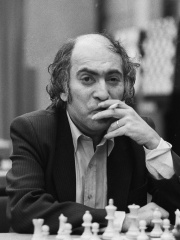
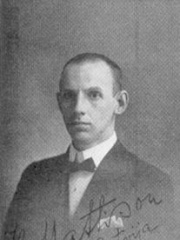

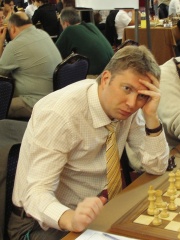
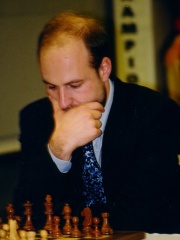
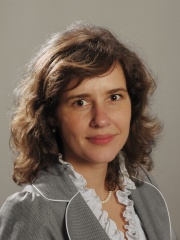
The Most Famous
CHESS PLAYERS from Latvia
This page contains a list of the greatest Latvian Chess Players. The pantheon dataset contains 461 Chess Players, 7 of which were born in Latvia. This makes Latvia the birth place of the 22nd most number of Chess Players behind Slovakia, and Austria.
Top 7
The following people are considered by Pantheon to be the most legendary Latvian Chess Players of all time. This list of famous Latvian Chess Players is sorted by HPI (Historical Popularity Index), a metric that aggregates information on a biography's online popularity.

1. Mikhail Tal (1936 - 1992)
With an HPI of 75.71, Mikhail Tal is the most famous Latvian Chess Player. His biography has been translated into 69 different languages on wikipedia.
Mikhail Tal (9 November 1936 – 28 June 1992) was a Soviet Latvian chess grandmaster and the eighth World Chess Champion. He is considered a creative genius and is widely regarded as one of the most influential players in chess history. Tal played in an attacking and daring combinatorial style. His play was known above all for improvisation and unpredictability. Vladislav Zubok said of him, "Every game for him was as inimitable and invaluable as a poem". His nickname was "Misha", a diminutive for Mikhail, and he earned the nickname "The Magician from Riga". Both The Mammoth Book of the World's Greatest Chess Games and Modern Chess Brilliancies include more games by Tal than any other player. He also held the record for the longest unbeaten streak in competitive chess history with 95 games (46 wins, 49 draws) between 23 October 1973 and 16 October 1974, until Ding Liren's streak of 100 games (29 wins, 71 draws) between 9 August 2017 and 11 November 2018. In addition, Tal was a highly regarded chess writer. Tal died on 28 June 1992 in Moscow, Russia. The Mikhail Tal Memorial chess tournament was held in Moscow annually between 2006 and 2014, with two more tournaments in 2016 and 2018.

2. Hermanis Matisons (1894 - 1932)
With an HPI of 55.61, Hermanis Matisons is the 2nd most famous Latvian Chess Player. His biography has been translated into 15 different languages.
Hermanis Matisons (German: Herman Mattison; 1894, Riga – 1932) was a Latvian chess player and one of world's most highly regarded chess masters in the early 1930s. He was also a leading composer of endgame studies. He died of tuberculosis at the age of 37. In 1924, Matisons won the first Latvian Chess Championship tournament. Later that year he finished ahead of Fricis Apšenieks, and Edgard Colle to win the first World Amateur Championship, which was organized in conjunction with the Paris Olympic Games, followed by Max Euwe in 1928. Matisons played first board for Latvia at the 1931 Chess Olympiad in Prague and defeated Akiba Rubinstein and Alexander Alekhine, then the reigning World Champion. Sixty of Matisons' endgame studies were collected in the 1987 book Mattison's Chess Endgame Studies by T.G. Whitworth.

3. Vladimirs Petrovs (1907 - 1943)
With an HPI of 53.81, Vladimirs Petrovs is the 3rd most famous Latvian Chess Player. His biography has been translated into 15 different languages.
Vladimirs Petrovs (Russian: Влади́мир Миха́йлович Петро́в, romanized: Vladimir Mikhailovich Petrov; 27 September 1908 – 26 August 1943) was a Latvian Russian chess player.

4. Alexei Shirov (b. 1972)
With an HPI of 52.74, Alexei Shirov is the 4th most famous Latvian Chess Player. His biography has been translated into 36 different languages.
Alexei Dmitrievich Shirov (Russian: Алексе́й Дми́триевич Ши́ров, romanized: Alexey Dmitrievich Shirov, Latvian: Aleksejs Širovs; born 4 July 1972) is a Latvian and Spanish chess player. Shirov was ranked number two in the world in 1994. He won a match against Vladimir Kramnik in 1998 to qualify to play as challenger for the classical world championship match with Garry Kasparov; it never took place due to a lack of sponsorship.
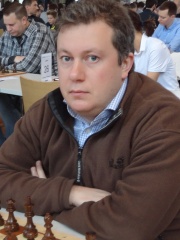
5. Arkadij Naiditsch (b. 1985)
With an HPI of 43.36, Arkadij Naiditsch is the 5th most famous Latvian Chess Player. His biography has been translated into 25 different languages.
Arkadij Naiditsch (Azerbaijani: Arkadi Naydiç; born 25 October 1985) is a Latvian chess grandmaster who currently represents Bulgaria after previously representing Latvia (until 1997), Germany (1998–2015) and Azerbaijan (2015–2024).

6. Alexander Shabalov (b. 1967)
With an HPI of 42.70, Alexander Shabalov is the 6th most famous Latvian Chess Player. His biography has been translated into 16 different languages.
Alexander Anatolyevich Shabalov (Russian: Алекса́ндр Анато́льевич Шаба́лов; Latvian: Aleksandrs Anatoļjevičs Šabalovs; born September 12, 1967) is an American chess grandmaster and a four-time winner of the United States Chess Championship (1993, 2000, 2003, 2007). He also won or tied for first place seven times in the U.S. Open Chess Championship (1993, 1999, 2003, 2007, 2008, 2015, 2016).

7. Dana Reizniece-Ozola (b. 1981)
With an HPI of 39.76, Dana Reizniece-Ozola is the 7th most famous Latvian Chess Player. Her biography has been translated into 18 different languages.
Dana Reizniece (born November 6, 1981) is a Latvian politician and chess player. She has been managing director of the International Chess Federation (FIDE) since 2021. She also served as minister of Economics (2014–2016) and minister of Finance (2016–2019) of the Republic of Latvia. Reizniece-Ozola was elected as a member of the 10th, 11th, 12th and 13th Saeima of the Republic of Latvia and worked as the chairperson of the Commission on Education, Culture and Science, Member of the Legal Affairs Commission and Member of the European Affairs Commission. In chess, Reizniece-Ozola was awarded the title of Woman Grandmaster by FIDE in 2001. She is presently vice-president of the European Chess Union.
People
Pantheon has 7 people classified as Latvian chess players born between 1894 and 1985. Of these 7, 4 (57.14%) of them are still alive today. The most famous living Latvian chess players include Alexei Shirov, Arkadij Naiditsch, and Alexander Shabalov. The most famous deceased Latvian chess players include Mikhail Tal, Hermanis Matisons, and Vladimirs Petrovs.
Living Latvian Chess Players
Go to all RankingsAlexei Shirov
1972 - Present
HPI: 52.74
Arkadij Naiditsch
1985 - Present
HPI: 43.36
Alexander Shabalov
1967 - Present
HPI: 42.70
Dana Reizniece-Ozola
1981 - Present
HPI: 39.76
Deceased Latvian Chess Players
Go to all RankingsMikhail Tal
1936 - 1992
HPI: 75.71
Hermanis Matisons
1894 - 1932
HPI: 55.61
Vladimirs Petrovs
1907 - 1943
HPI: 53.81
Overlapping Lives
Which Chess Players were alive at the same time? This visualization shows the lifespans of the 3 most globally memorable Chess Players since 1700.

